Who is Peru's new leader Pedro Pablo Kuczynski?
- Published
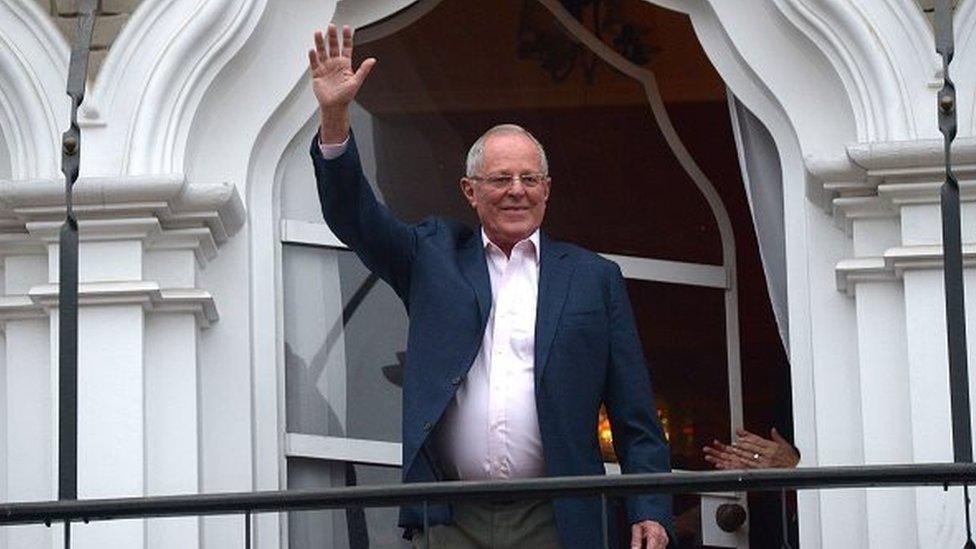
Pedro Pablo Kuczynski beat Keiko Fujimori to the presidency by a narrow margin
Pedro Pablo Kuczynski has narrowly won the presidential elections in Peru.
BBC News takes a closer look at the new leader of the Latin American country.

Where is he from?
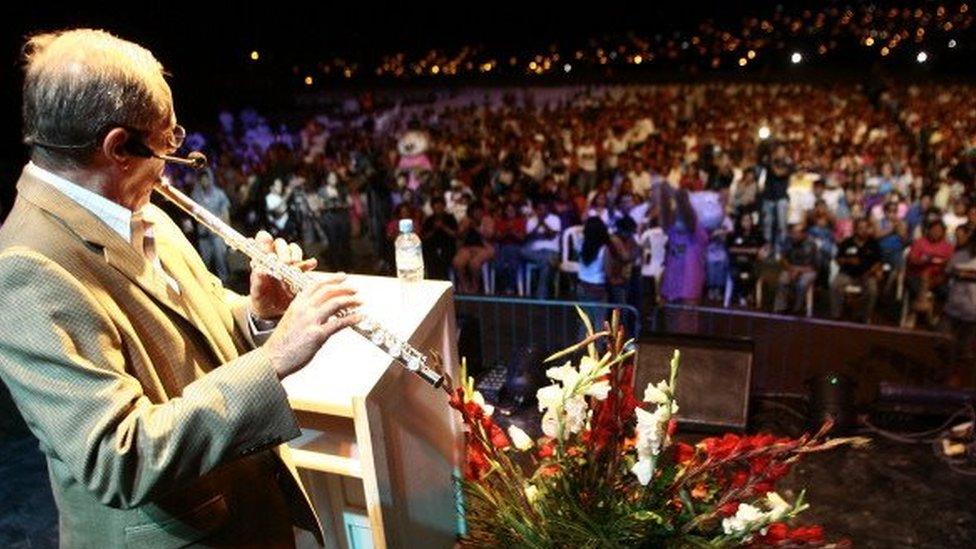
Mr Kuczynski has been known to play the flute at campaign rallies
Pedro Pablo Kuczynski's father, Maxime Hans Kuczynski, was born in Poznan, in Poland. He later became a doctor in Berlin.
He left Berlin after Adolf Hitler came to power and arrived in Peru with his Swiss wife in 1936.
Pedro Pablo was born in 1938 in Lima, but his family soon moved to Iquitos, in the Peruvian Amazon, where his father worked as a doctor fighting leprosy and yellow fever.
He also spent part of his childhood in Puno and Cusco.
Pedro Pablo Kuczynski says that seeing his father working in some of the poorest parts of the country instilled in him a desire to strive for more equality in Peru.

What's his background?
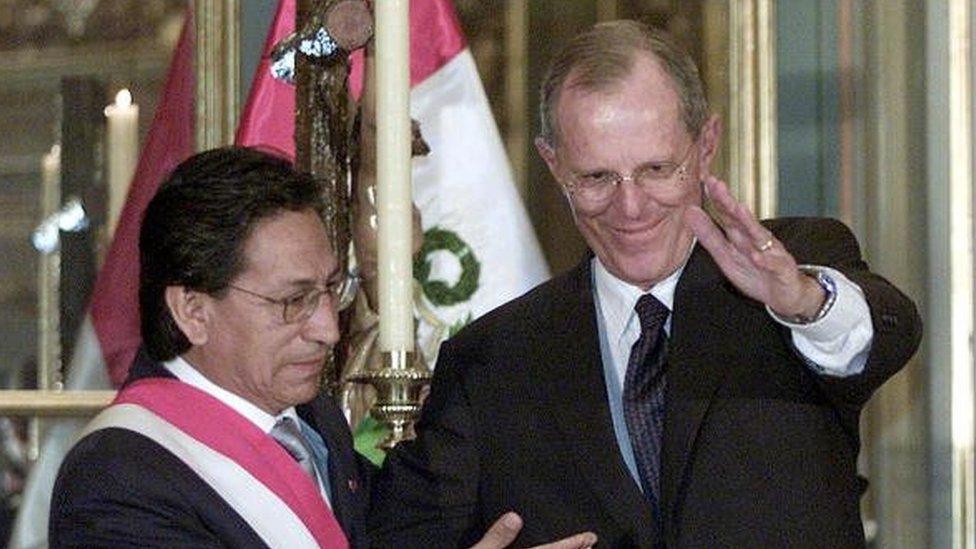
Mr Kuczynski was Alejandro Toledo's economy minister
He says that his mother, who taught literature, was his inspiration to get a first-class education.
He won a scholarship to the University of Oxford, where he studied philosophy, politics and economics.
He also got a master's degree from the prestigious Princeton University in the US.
At the age of 23, he was hired by the World Bank. He later returned to Peru to work for Peru's Central Bank.
In 1980, he was named energy and mining minister by then-President Fernando Belaund.
He also served as economy and mining minister twice, from 2001 to 2002 and again from 2004 to 2005.

Where does he stand politically?
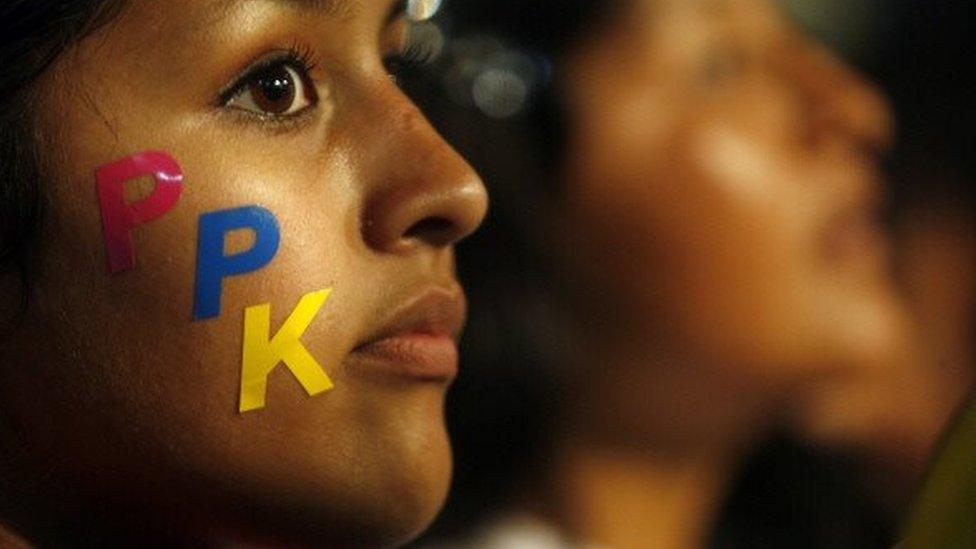
Pedro Pablo Kuczynski is a centre-right politician who believes in the free market. He says he wants to create a more equal country and fight corruption.
Asked before the election where he stood politically, he said: "Peru does not want extremism. We are the centre. What does it mean being at the centre? Very simple: great economic growth to finance social investments."
He wants to lower the tax rate for small businesses and make it easier for them to get credit.

What are his priorities?
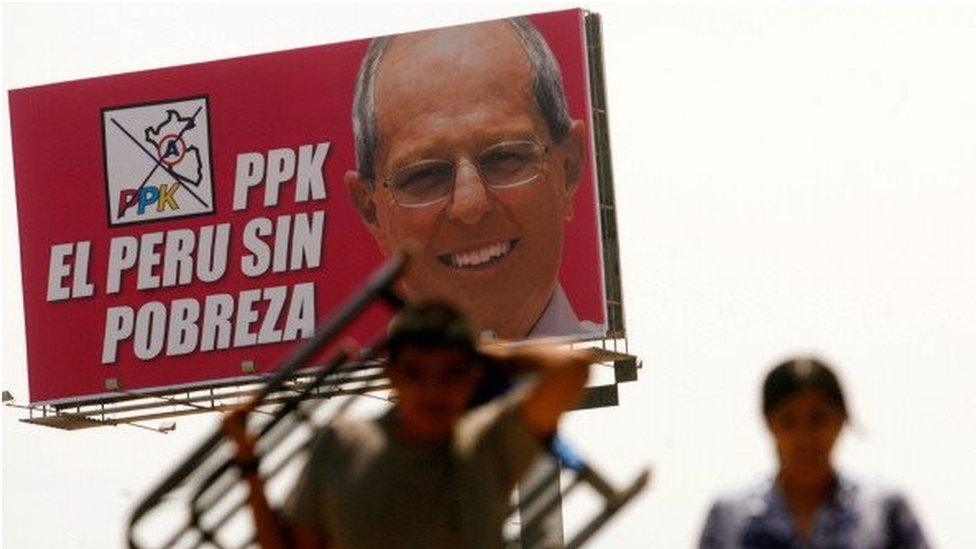
Mr Kuczynski ran for president in 2011, promising to eradicate poverty in Peru
Mr Kuczynski campaigned on a promise of creating more equality for Peruvians.
He says he wants to improve education by raising teachers' salaries and investing in schools.
He has also promised to improve access to drinking water and give more support to Peru's farmers.
On an international level, he says he aims to improve relations with neighbouring Chile, which have at times been tense due to a dispute over their maritime border.

What are the challenges he faces?
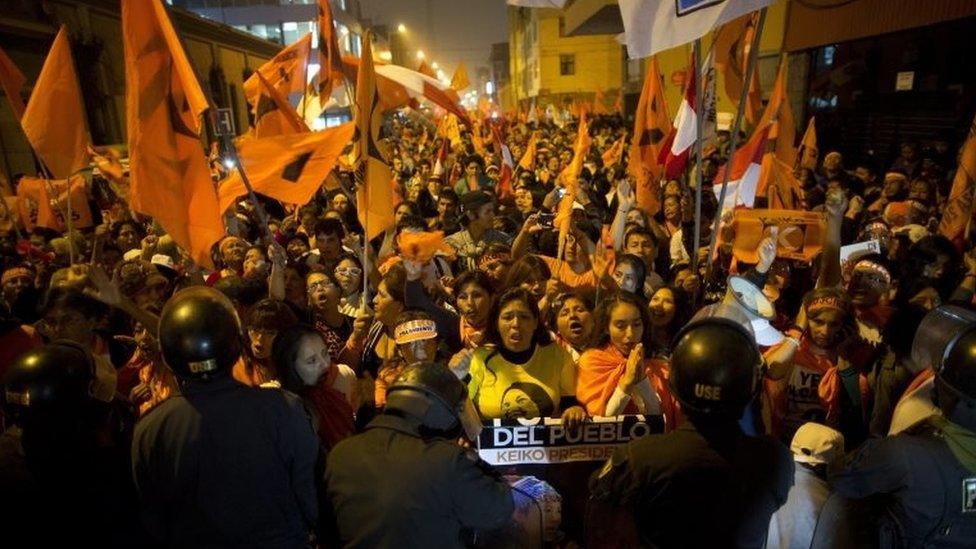
Support for Keiko Fujimori and her Fuerza Popular party remains strong
Peru's Congress is dominated by his rival's Popular Force party, which won 73 seats in legislative elections in April.
Mr Kuczynski's party only holds 13 seats in the 130-seat Congress.
It will therefore not be easy for Mr Kuczynski to push his proposed plans through Congress.
Some of the left-wing groups who threw their support behind Mr Kuczynski to ensure the defeat of his rival, Keiko Fujimori, have already said they will not back his economic policies.
He will also have to try to combat crime and improve security, as many voters named those as their main concerns.